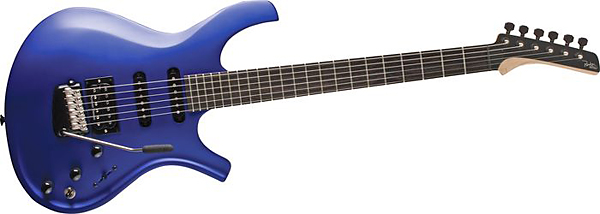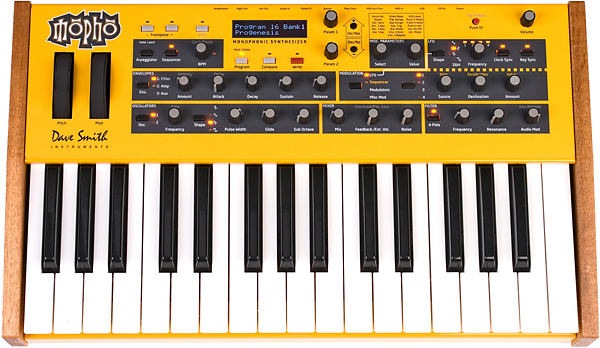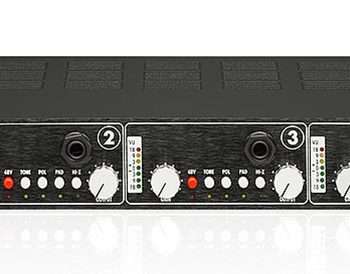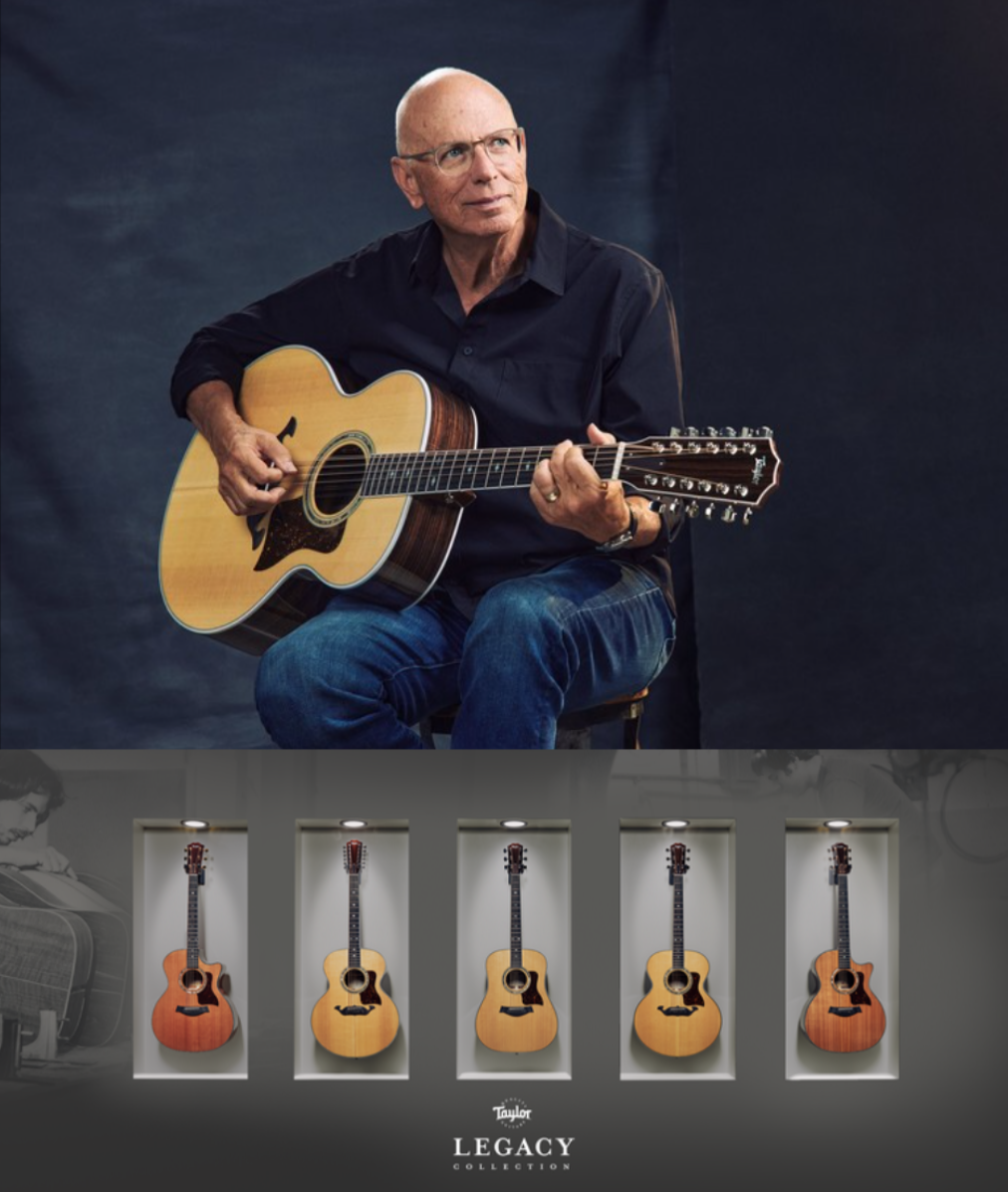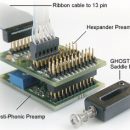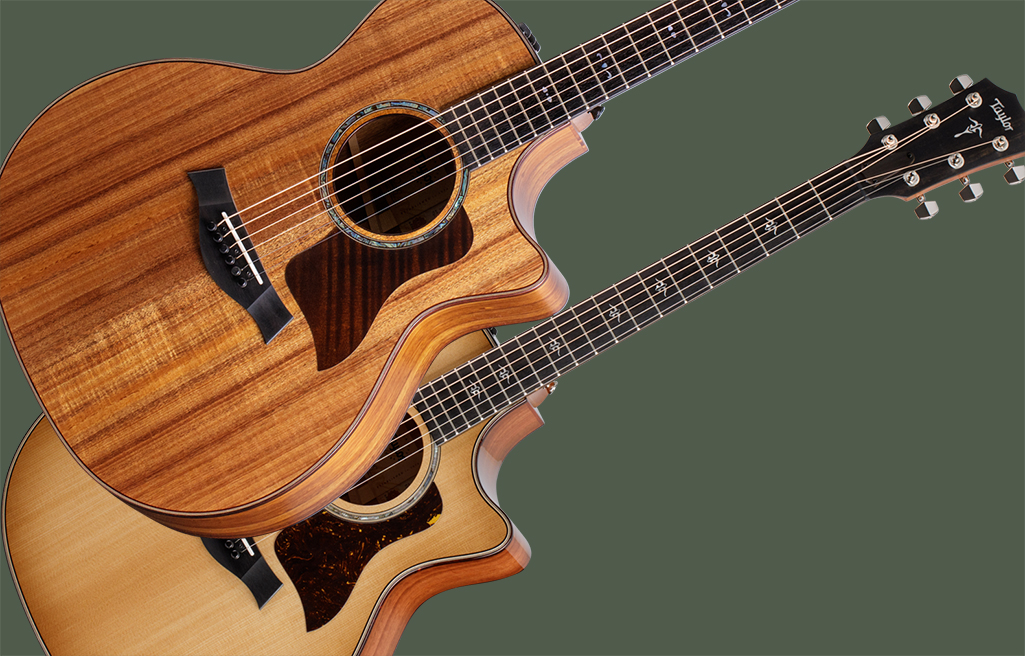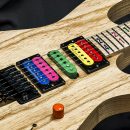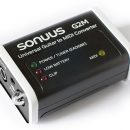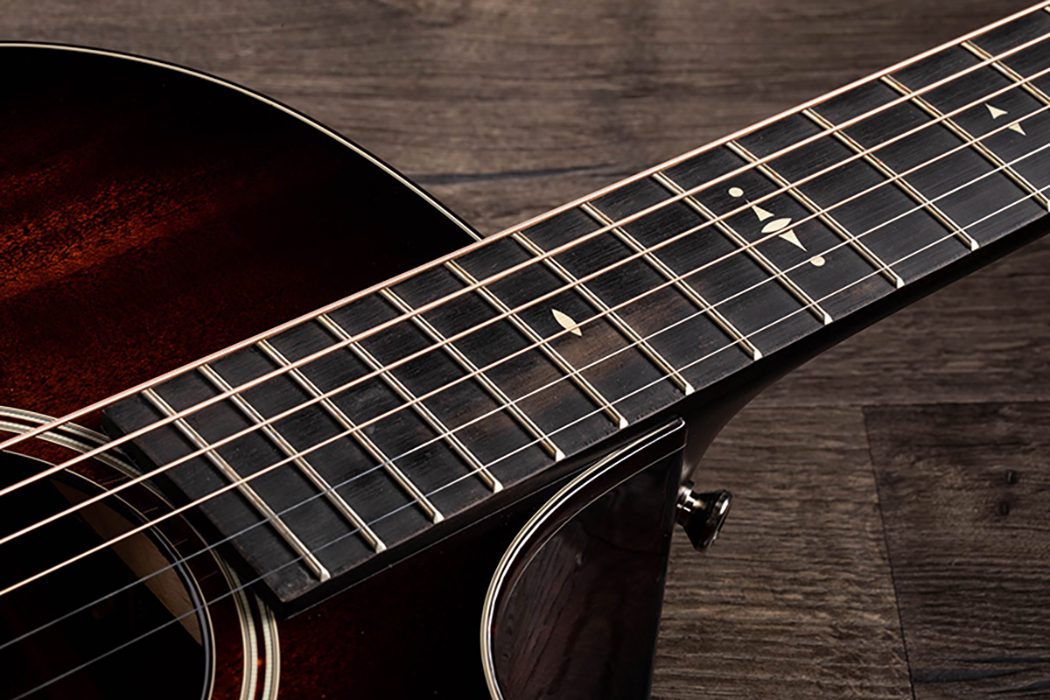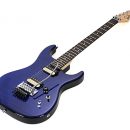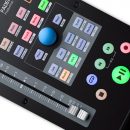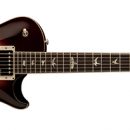 The Parker Fly guitar has been played by countless pros, and its unique body style is instantly recognizable by any guitar aficionado. Fly guitars were among the first solidbody electrics to incorporate Piezo pickups for delivering acoustic guitar tones, and their thin, sculpted bodies and dreamy necks are a joy to play for days on end.
The Parker Fly guitar has been played by countless pros, and its unique body style is instantly recognizable by any guitar aficionado. Fly guitars were among the first solidbody electrics to incorporate Piezo pickups for delivering acoustic guitar tones, and their thin, sculpted bodies and dreamy necks are a joy to play for days on end.
The MaxxFly DF524 presents a new body style that is at least as beautiful as the original Fly, but may appeal to an even larger audience of players. The hard, sculpted lines of the original Fly have been softened with rounded edges have a slightly more traditional appearance, but the sculpted horns and gorgeous headstock are obvious Parker signatures. It was originally announced as the Dragonfly, but the name is presently undergoing a revision, so we'll just refer to it as the DF524 for now. [Editor's Note 7/11: MaxxFly is the new name!] Call it what you will; it’s still one sweet axe!
| Category | Value | Rating |
| Features | 20% | |
| Usability | 25% | |
| Sound | 25% | |
| Documentation & Support | 10% | |
| Price | 20% | |
| OVERALL RATING = 3.6, which earns it a WIHO Award! 3.6 stars or better: Outstanding, WIHO Award 3 stars or better: Worth considering 2 stars or better: Suited to specific needs 1 star or less: Not recommended |
||
The DF524 is a fantastic guitar sure to appeal to a variety of guitar players across a range of styles — especially Strat players looking for something a bit more exciting. The super-sleek, low action, neck is a dream to shred across, and the Seymour Duncan pickups offer a wide range of traditional guitar tones. The added beauty of Piezo acoustic tones makes the axe even more versatile, and the Parker-designed tremolo bridge makes vibrato playing a thing of joy.
Priced under $1,500 USD, there’s never been a better value if you want to add a professional Parker guitar to your arsenal (we weren’t fans of the now discontinued NightFly models, which didn’t do justice to the Parker line like this one does). So what are you waiting for?
Features
The USA-made DF features a lightweight Alder body (only five pounds total), and our DF524 came dressed in a cool Satin Majik Blue (some photos in this review feature the natural wood finish option). Unlike pricier Parker models, the DF524 has a bolt-on maple neck (as opposed to neck-thru construction) and specially designed radial neck joint that virtually eliminates movement of the neck.
 The headstock has been very slightly modified, with a three dimensional cutout that is as much functional as it is cosmetic. The thicker headstock adds strength so that the neck profile can be slightly thinner, and it’s a gorgeous detail that these photos hardly capture. We would love to see this new design appear on more costly Parker guitars.
The headstock has been very slightly modified, with a three dimensional cutout that is as much functional as it is cosmetic. The thicker headstock adds strength so that the neck profile can be slightly thinner, and it’s a gorgeous detail that these photos hardly capture. We would love to see this new design appear on more costly Parker guitars.
The 22-fret neck has an ebony fingerboard with top dot markers (not on the fretboard), medium-jumbo stainless steel frets, and a satin neck finish. Sperzel Trim-Lok locking tuners are standard.
The included pickups are a Seymour Duncan TB14 bridge humbucker and two SSL6 single coil pickups, but unlike previous Parker Fly guitars, the pickup mounting system in the DF524 has been “improved” so that you can replace the pickups with any after-market electronics of your choice. Some players may question the improvement because the humbucker is mounted to a plastic ring instead of direct-mounted to the body as with other Parker models.
The TB14 pickup is similar to a Seymour Duncan ’59 Model with hotter output and a deeper bottom end, suited to a wide range of styles from pop and country to heavy rock. The SSL6 is a high-output single coil pickup suggested for use in blues rock, classic rock, and heavy rock situations.
 A five-way pickup selector chooses between a wide range of familiar pickup combinations, and a coil tap switch (pull up the tone knob) splits the humbucker for a huge variety of tonal possibilities. The center pickup is reverse wound and wired with reverse polarity for noise-free operation.
A five-way pickup selector chooses between a wide range of familiar pickup combinations, and a coil tap switch (pull up the tone knob) splits the humbucker for a huge variety of tonal possibilities. The center pickup is reverse wound and wired with reverse polarity for noise-free operation.
The second switch, a three-way toggle, selects between the Piezo pickups (down), both Piezo and magnetic (middle), or magnetic only (up). The output jack is wired for mono or stereo operation.
With a stereo cable (included), you can route the output from each pickup system to a different amp. This is where Piezo-equipped guitars really shine, as you can have a heavy electric guitar tone coming out of your guitar amp while it’s layered with an acoustic guitar tone coming from an acoustic amp or direct box running to a PA system.
The included cable is stereo at the guitar side and it splits out to two mono cables at the other end. If you just use a standard instrument cable, both outputs would run into your guitar amp. While not as flexible in this configuration since you can’t layer a clean and distorted tone concurrently, you still gain the benefit of pure acoustic guitar tones on your clean amp settings. And finally, you can run a dedicated stereo cable to a breakout box and split the signals to two different amps from there as well.
The guitar has volume knobs for the magnetic and Piezo pickups, and a tone knob provides high-frequency roll-off control.
The bridge is one of Parker’s custom aluminum bridges, and although it ships in pitch-down configuration, it can be set for fully floating, too.
Weighing just five pounds, you can bet that wearing this guitar for days on end will be a thing of joy.
Usability
 Parker DF524 Neck JointThe Parker DF524 is a dream to play. Like its more expensive siblings, the neck is sheer perfection. The satin finish is silky smooth, the action is very low, and the new neck joint provides easy access to the upper frets. We could shred our hearts out on this neck, and yet it never grew tiresome like some fast playing necks from other builders.
Parker DF524 Neck JointThe Parker DF524 is a dream to play. Like its more expensive siblings, the neck is sheer perfection. The satin finish is silky smooth, the action is very low, and the new neck joint provides easy access to the upper frets. We could shred our hearts out on this neck, and yet it never grew tiresome like some fast playing necks from other builders.
Although we didn’t reconfigure the tremolo for floating use, players who love to add some vibrato to their chords will be in heaven — pitch bending was dreamy soft and smooth on this guitar, and the padded tremolo arm adds a nice finishing touch that both looks cool and feels great.
It should also be noted that there is no thumb wheel on the rear of the guitar for adjusting tremolo tension like we’ve seen on other Parker models. But overall, the areas where Parker has economized on the guitar have enabled them to deliver a high-quality USA-made instrument that still has the characteristics for playability and sound that we’ve come to expect from the more costly models.
On a guitar like the DF524, it should come as no surprise that the Sperzel tuners and Parker bridge maintained very good tuning stability, though this guitar utilizes traditional springs instead of the patented flat springs found in more costly models.
The DF524 ships with a stereo-to-dual-mono cable so that you can immediately begin to explore the world of splitting your signals to two amps. Because the leads are only approximately 12” long at the dual-mono end of the cable, we found this cable most useful for sending the Piezo output to a direct box that we placed on top of our amp head. It wasn’t long enough to run to an acoustic amp sitting next to our electric guitar rig.
Our only complaints have to do with the ergonomics of the Piezo implementation. The location of the three-way toggle switch, hidden beneath the other knobs, makes it impossible to hit quickly for instant switching from acoustic to electric tones. Re-locating this switch to the upper horn of the guitar would facilitate changing from acoustic to electric tones in the span of a fast eighth note, such as going from a verse to a chorus in mid song. We would also prefer the option of a second, dedicated output jack rather than relying on a stereo cable for splitting our guitar signals.
Sound
The Parker DF524 sounds very good. Players in virtually any pop, rock, or metal situation should find plenty of great tone coming out of this guitar, especially if you favor Strat-like sounds.
We played this guitar through a variety of Mesa/Boogie, ENGL, and Fender amps over the course of our review and paired it with everything from bright clean tones to mid-gain bluesy stuff to over-the-top punishing metal, and the DF524 performed admirably in most situations.
The Seymour Duncan TB14 humbucker and SSL6 single-coil pickups provide a very balanced combination of both tone and output. In fact, the SSL6 in the neck position is strong enough relative to the TB14 that there was barely a difference in volume when flipping the pickup selector all the way from the bridge humbucker to the neck.
Sustain was good from the guitar on very-high-gain tones through our ENGL e580/850 rig – totally suitable for high-gain metal mayhem, but the Seymour Duncan pickups output isn’t especially hot. As such, on mid-gain tones from the ENGL and a Dual Rectifier set for some classic ‘70s hard rock tone, the TB14 didn’t hit the amp hard enough for the drive and sustain we wanted.
Prog rock/finesse players will appreciate the excellent note definition and clarity from the pickups. We were able to hear all the notes from complex chord voicings come through high gain sounds on the bridge pickup. It was easy to unleash our inner ‘80s demon across the sumptuous neck as tapping and harmonics jumped off the fretboard with ease, and feedback was always nicely controlled.
The neck SSL6 provided very good lead tones. We’ve heard some flutier, liquid lead tones from other pickups, but those pickups lacked something the SSL6 delivered wonderfully — fantastic, rockin’ rhythm tones! The SSL6 at the neck sounded very warm and clear in this capacity, and players who play ska and funky clean tones will love getting their groove on in this position.
Notch positions and those leaning towards the neck pickup had a very woody character to their tone. If you like to hear the sound of your wood, this guitar did an admirable job of that, though it never delivered the kind of bright, spanky clean tones a Strat purist may be looking for when played through a bright sounding amp. This isn’t to say that the guitar doesn’t deliver beautiful clean tones — it certainly does. But they lean towards the warmer side more than the brighter side. Of course if you switch output to the Piezo, or blend the Piezo and magnetic pickups through the mono output, you’ll get more than enough brightness (though still without the classic “spank”). It’s easy to coax a variety of tones out of the DF524 useful for alternative and indie rock styles, too.
Contrary to what we expected from the reverse wiring/polarity of the middle pickup, single coil pickup noise was evident in all switch positions other than the bridge-only (humbucker) and position four, which apparently ran the two single coil pickups in parallel and thus provided noise cancellation. That said, the single coil noise level was very acceptable, even on high-gain settings.
The Piezo sounded very good, and that was without adding some extra flavor from our favorite L.R. Baggs Para Acoustic DI. Running into our guitar amp and throwing some chorus and delay on it, we got some great stage- and studio-worthy processed acoustic tones. Natural acoustic tones sounded even better once we ran them into the Para Acoustic DI and off to our PA system.
 Documentation and Product Support
Documentation and Product Support
Parker provide a nicely detailed booklet talking about the Fly guitar’s evolution, and then leading into extensive details about the controls and routine maintenance, including intonation adjustments.
Not all of the content is relevant to each model guitar, however. We would like the documentation to be updated to indicate which guitars are being addressed by the information. It was obvious to us that the included documentation didn’t specifically apply to the DF524 model.
[Editor's Note, 9/28/10: New documentation for the guitar is presently in the works, and may be shipping by the time you put one of these guitars in your hands.]
Price
The Parker DF524 (MSRP $1,999) sells for $1,499, a fantastic value for such a beautifully crafted, versatile, American-made instrument. The price includes a hard case and a stereo-to-dual-mono instrument cable.
Contact Information
Parker Guitars
www.parkerguitars.com
| Evaluation Short-List |
|

